
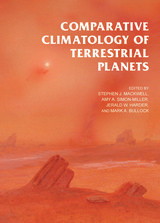
Deducing the initial conditions for these diverse worlds and unraveling how and why they diverged to their current climates is a challenge at the forefront of planetary science. Through the contributions of more than sixty leading experts in the field, Comparative Climatology of Terrestrial Planets sets forth the foundations for this emerging new science and brings the reader to the forefront of our current understanding of atmospheric formation and climate evolution. Particular emphasis is given to surface-atmosphere interactions, evolving stellar flux, mantle processes, photochemistry, and interactions with the interplanetary environment, all of which influence the climatology of terrestrial planets. From this cornerstone, both current professionals and most especially new students are brought to the threshold, enabling the next generation of new advances in our own solar system and beyond.
Contents
Jim Hansen
Mark Bullock
Scot Rafkin
Caitlin Griffith
Shawn Domagal-Goldman and Antigona Segura
Kevin Zahnle
Part II: The Greenhouse Effect and Atmospheric Dynamics
Curt Covey
G. Schubert and J. Mitchell
Tim Dowling
Francois Forget and Sebastien Lebonnois
Vladimir Krasnopolsky
Adam Showman
Part III: Clouds, Hazes, and Precipitation
Larry Esposito
A. Määttänen, K. Pérot, F. Montmessin, and A. Hauchecorne
Nilton Renno
Zibi Turtle
Mark Marley
Part IV: Surface-Atmosphere Interactions
Colin Goldblatt
Teresa Segura et al.
John Grotzinger
Adrian Lenardic
D. A. Brain, F. Leblanc, J. G. Luhmann, T. E. Moore, and F. Tian
Part V: Solar Influences on Planetary Climate
Aaron Zent
Jerry Harder
F. Tian, E. Chassefiere, F. Leblanc, and D. Brain
David Des Marais

The increase in our knowledge of the solar system during the five years since the author last revised this book (1963) greatly exceeds that in the previous two decades. The program of the U.S. National Aeronautics and Space Administration and the space program of the U.S.S.R. have been prime contributors to this rapid progress, but the impetus has carried over to groundbased studies of the Moon and planets as well. The advances in radio and radar astronomy alone are striking, and are continuing at an accelerating pace.
This third edition of Mr. Whipple's popular and authoritative book is thoroughly revised in light of this new knowledge. The most extensive revisions are in the chapters on the Moon, Mars, and Venus--the members of the solar system on which the various space programs have concentrated. The author has included many new and dramatic illustrations in this third edition, among them photographs taken from U.S. and Russian space craft. There are striking photographs of the Moon, with close-up views of its surface texture, pictures of Mars taken from Mariner IV, and radar pictures of Venus that "see through" that planet's obscuring cloud layer.
The book is written in nontechnical language and with a lucid, witty style that is readily understandable to the interested layman. Mathematics has been avoided, and scientific methods and processes are described in simple terms. In presenting the latest information about the planets and their moons, Mr. Whipple discusses their origin and evolution, motions, atmospheres, temperatures, surface conditions, the environment essential for life as we know it, and the possibilities of life outside the Earth. He concludes with a discussion of current theories about the origin of the solar system.

--Spokes and braids in the rings of Saturn
--Eddying currents around Jupiter's Great Red Spot
--Volcanic eruptions on the satellite Io
These are the images from Voyager that have made headlines and captured the public imagination. Now, a giant of twentieth century astronomy guides us on a literary voyage of discovery that retraces the steps of this and other recent space probes--Viking, Mariner, Pioneer, as well as Russian efforts--that have revolutionized our understanding of Earth's nearest neighbors. Every step of the way, Fred Whipple provides the basic foundation in astronomy that enables the reader to be not merely awed and entranced but thoroughly informed, with a solid and satisfying understanding of the workings of our solar system.
In a dazzling combination of text and illustrations, Orbiting the Sun offers vistas that rival science fiction:
--mountains on Mars twice the height of Everest
--thunderstorms and sulfuric acid clouds on Venus
--the possibility of liquid nitrogen oceans on Titan
But the author also explores in precise detail the tests carried out by the Viking Lander that with virtual certainty have ruled out the hope of finding life on Mars.
This completely revised and updated edition of Whipple's classic Earth, Moon, and Planets once again presents Earth within its planetary context. This view allows us to speculate on such provocative concepts as the connection between an asteroid collision and the extinction of the dinosaurs. But the most obvious enhancement of this new edition is the stunning photographs, that include the eerie panorama of the Martian landscape taken from the Viking Landers, the dramatic sweep of Saturn's thousand rings, and full color port raits of the Jovian moons--the battered face of Callisto, Europa with its web of thin scratches, the "superhighways" of Ganymede, and Io with its volcanic plumes.
Fred Whipple has introduced two generations of student and amateur astronomers to the wonders of the solar system. In Orbiting the Sun he will charm and inform an entirely new audience.
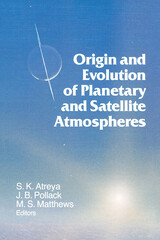

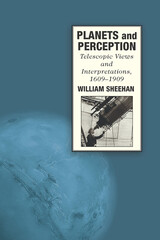
Do we really know what we see through a telescope? How does the ocular system construct planetary images, and how does the brain interpret them? Drawing on both astronomical and psychological data, William Sheehan offers the first systematic analysis of the perceptual and cognitive factors that go into the initial structuring of a planetary image and its subsequent elaboration. Sheehan details the development of lunar and planetary astronomy, beginning with Galileo’s study of the moon, and focuses particularly on the discover of “canals” on Mars. Through each episode he underscores a perceptual or psychological theme, such as the importance of differences in vision, tachistoscopic perceptual effects, the influence of expectation and suggestion on what one sees, and the social psychology of scientific discovery. Planets and Perception is a provocative book that will intrigue anyone who has ever looked through a telescope. In addition, it offers the psychologically oriented reader a case history in the processes of perception unlike any other in the literature.
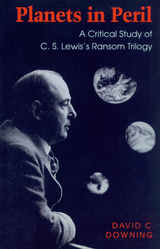
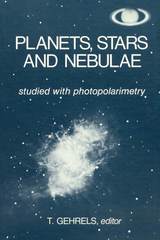
“The high quality of this book is clearly due to strict editorial attention to each paper and the discussions. Gehrels’s book will surely stand for many years as the fundamental reference source for polarization studies in astronomy as well as in atmospheric physics.”—Journal of the Association of Lunar and Planetary Observers
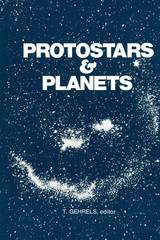
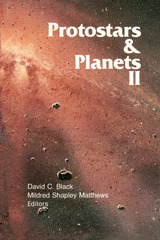
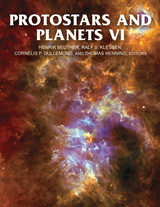
question: How do planets and their host stars form and evolve? Protostars and Planets VI brings together more than 250 contributing authors at the forefront of their field, conveying the latest results in this research area and establishing a new foundation for advancing our understanding of stellar and planetary formation.
Continuing the tradition of the Protostars and Planets series, this latest volume uniquely integrates the cross-disciplinary aspects of this broad field. Covering an extremely wide range of scales, from the formation of large clouds in our Milky Way galaxy down to small chondrules in our solar system, Protostars and Planets VI takes an encompassing view with the goal of not only highlighting what we know but, most importantly, emphasizing the frontiers of what we do not know.
As a vehicle for propelling forward new discoveries on stars, planets, and their origins, this latest volume in the Space Science Series is an indispensable resource for both current scientists and new students in astronomy, astrophysics, planetary science, and the study of meteorites.
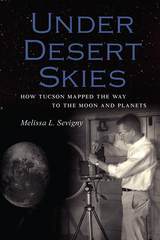
An upstart planetary laboratory in Tucson would play a vital role in the nation’s grand new venture, and in doing so, it would help create the field of planetary science. Founded by Gerard P. Kuiper in 1960, the Lunar and Planetary Laboratory (LPL) at the University of Arizona broke free from traditional astronomical techniques to embrace a wide range of disciplines necessary to the study of planets, including geology, atmospheric sciences, and the elegant emerging technology of spacecraft. Brash, optimistic young students crafted a unique sense of camaraderie in the fledgling institution. Driven by curiosity and imagination, LPL scientists lived through—and, indeed, made happen—the shattering transition in which Earth’s nearest neighbors became more than simple points of light in the sky.
Under Desert Skies tells the story of how a small corner of Arizona became Earth’s ambassador to space. From early efforts to reach the Moon to the first glimpses of Mars’s bleak horizons and Titan’s swirling atmosphere to the latest ambitious plans to touch an asteroid, LPL’s history encompasses humanity’s unfolding knowledge about our place in the universe.

In Worlds in the Sky, William Sheehan gives us a history of this long fascination, weaving together scientific history, anecdotes surrounding planetary discoveries, and the personal reflections of an incurable amateur astronomer. He describes how we arrived at our current understanding of the Moon and the planets and shows how certain individuals in history shaped the world’s knowledge about the Solar System.
READERS
Browse our collection.
PUBLISHERS
See BiblioVault's publisher services.
STUDENT SERVICES
Files for college accessibility offices.
UChicago Accessibility Resources
home | accessibility | search | about | contact us
BiblioVault ® 2001 - 2024
The University of Chicago Press









